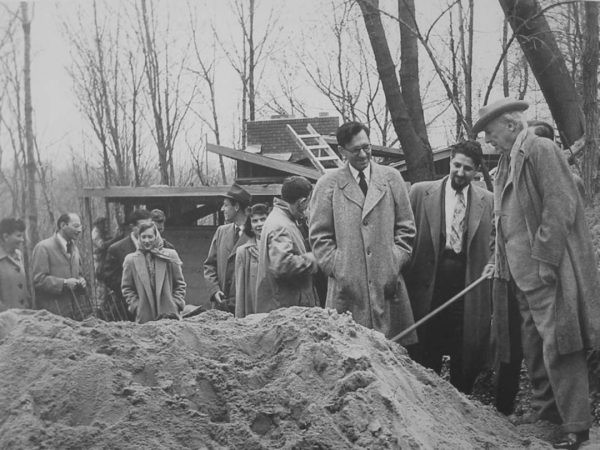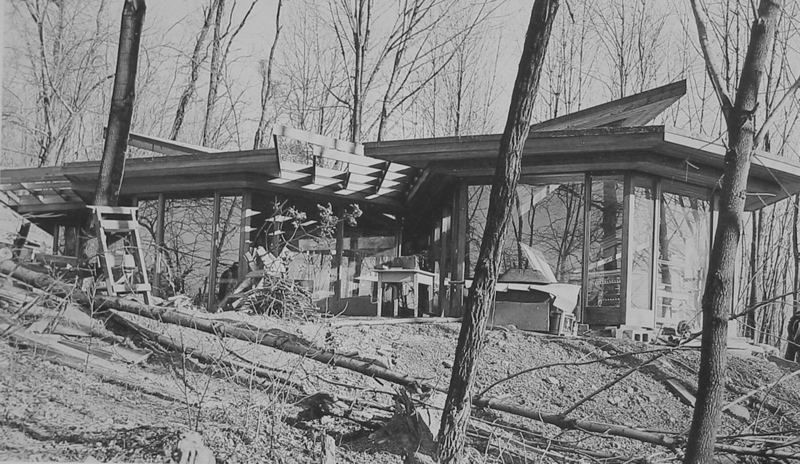David Henken House (Usonia Historic District)
Introduction
Text-to-speech Audio
David Henken (1915-1987) was the principal founder of the Usonia community of homes in Pleasantville, New York. It was Henken's vision to create the Usonia cooperative in Westchester County, NY, and it was he who solicited Frank Lloyd Wright's participation in the project. The home Henken designed for himself and his wife, Prescila, was completed in 1949 and features extensive floor to ceiling fenestration, clerestory windows, and roof pergolas. In the very early 1980s, Henken made additions to the house, including a bedroom wing, more living space, and a lap pool. The Henken House is included in the Usonia Historic District, which was placed on the National Register of Historic Places in 2012.
Images
David Henken next to Frank Lloyd Wright (right)


Backstory and Context
Text-to-speech Audio
Before contacting Frank Lloyd Wright to design the Usonia community of homes in Westchester County, NY, David Henken had attended an exhibit on Wright's work at New York City’s Museum of Modern Art in 1940. The exhibit contained the concepts underlying Wright’s work on an existing Usonia community in Michigan. The ideas expressed aligned with Henken’s interest in working together with others to jointly purchase land on which to build homes using a common architect and contractors. This then inspired Henken and his wife, Prescila, to travel to Frank Lloyd Wright’s studio in Taliesin, Wisconsin, in 1941 to train with Wright.
Upon their return to NY in 1943, the Henkens got to work recruiting members to join the cooperative community. During this period, their New York City apartment became Usonia’s de facto headquarters. From these earliest days and throughout the Usonia project, David Henken served as the main liaison to Wright. He also coordinated countless meetings, maneuvered multiple starts and delays, participated in the labor, and overcame numerous unanticipated setbacks to drive the project towards successful completion.
Although not an officially licensed architect himself, Henken designed thirteen of the original forty-seven Usonia homes, a quarter of the total homes completed, including homes for his family and his parents. He also worked on the additions for two other homes in the community. The home Henken designed for himself and his wife is a one-story polygonal residence with a pitched roof and a detached triangular studio. It is constructed of concrete slab, red brick, concrete block, and horizontal cypress siding.
Sources
- Giacobbe, Alyssa. “This is the Best-Designed Small Town in the U.S.: New York’s Secret Stash of Midcentury-Modern Design.” Architectural Digest. March 25, 2017. https://www.architecturaldigest.com/story/usonia-ny-best-designed-small-town-in-the-us
- Reisley, Roland. Usonia, New York: Building a Community with Frank Lloyd Wright. Princeton Architectural Press. 2003.
- “Usonia Historic District #12000600.” National Register of Historic Places. United States Department of the Interior/National Park Service. Sept 5, 2012. https://catalog.archives.gov/id/75323279
